Review: LG Voyager
Dec 19, 2007, 3:39 PM by Eric M. Zeman
The LG Voyager is more than an enV on steroids, it is a phone for power users. There are a few hiccups, though. Read about them here.
Form
Is It Your Type?
Is It Your Type?
Let's face it. If you're interested in the LG VX10000 Voyager, you're a power user. More than an LG enV on steroids, the Voyager almost does it all. Media playback and capture, full HTML web browsing, every form of messaging known to man, and, heck, it even makes pretty decent phone calls. If you're into any of the aforementioned, the Voyager is a solid candidate. Let's explore in detail why.
Body
One of the Voyager's many appealing characteristics is its elegant styling. (We're not going to be able to avoid the "i" word here, but we'll try to keep it to a minimum.) Yes, it does sort of resemble an iPhone if you put them next to one another. Even if imitation is the sincerest form of flattery, the Voyager does have many traits that set it far apart from the iPhone.
First and foremost are its bulk. It is 1/4 inch thicker than the iPhone, and this makes a bigger bulge in your pocket. It is narrower by about 1/4 inch, and stands at about the same height. They are practically the same weight. This means it is not a small phone. In fact, it is fairly large by today's standards. But in some instances bigger is better. It has a solid heft to it when you hold it in your hand, and wrapping your fingers around it isn't uncomfortable despite its size. The back of the phone has a nice textured paint job to it that give a bit of grip, which will prevent it from slipping out of your hand.
On the front, the large touch screen is set in a black frame that is ringed in silver color. There are only three buttons on the front of the phone, and two of them (send/end) are hidden in the dimple-textured plastic. The area for the send/end keys is quite large, though. Pressing your finger anywhere along the bottom of the phone is going to activate one or the other. The Clear key is set apart between the send/end keys. All three have good action and feedback. Because they are placed at the very bottom of the phone, however, they can be awkward to reach with your thumb, depending on how you are holding the phone.
There are three keys along the left side of the Voyager. The top most is the camera key. With the phone unlocked, it will launch the camera and also serve as the shutter release button. Just as on the enV, the top half of the phone does get in the way a little bit, and if you are fat fingered, you may have trouble finding the button. Below that key is a spring-loaded lock key. Sliding this key locks or unlocks the touch screen. This slide has ridges, so it is easier to catch with your finger, but it is fairly small. Last is the volume toggle / camera zoom key. It is also fairly small, but is still easily found and used. Feedback was kept to a minimum, but it was enough to let you know the key had been used.
The right side of the phone has just the cover for the microSD slot and 2.5mm headset hack. The microSD slot was easy enough to open, but we're disappointed that the Voyager does not have a standard-sized headset jack. For a phone with such powerful media capabilities, this seems to be a questionable choice for LG.
The power port and TV antenna are located on the bottom of the phone. The TV antenna is very thin. It pulls out about 5 inches to provide for better V CAST TV reception. When fully open, it has a 90-degree hinge so it doesn't just stick out straight from the bottom of the phone and can be aimed upwards or wherever you might experience the best signal. We worry about the longevity this antenna will experience. It could easily be bent or broken. Users should exercise care when fiddling with it.
When opened up, it is much more difficult to tell the Voyager apart from the enV. The internal screen is slightly larger, but the overall design is nearly identical. The screen is flanked by stereo speakers, and there is a full QWERTY keyboard for composing messages and inputting other data.
Opening the Voyager is easily done with either hand. There is no spring preventing it from opening, though it does lock itself into the open position at about 60 degrees so that it doesn't flap around. There's a tiny bit of resistance upon closing it, but it doesn't get in the way. The top part of the phone can be pushed open a full 180 degrees to help framing pictures, though I found when using it like this, it was very easy to accidentally cover the lens with the fingers on your right hand.
Holding it in your hand open is fairly comfortable. The textured paint job is extended into the trim around the keyboard, and this helps you maintain your grip on it. Our gripe list with this layout, however, is the same as with the enV.
While navigating menus from the front of the phone was easy, it was less so when the phone is open. The D-pad is on the extreme right side of the wide keypad very close to the edge of the phone, and your thumb has to bend at a very tight angle (i.e., 90 degrees) to be able to hit the pad directly below it. My thumb suffered from cramps very quickly using the D-pad. The send/end keys are above the D-pad and the speakerphone key and clear key are directly beneath it. As with the enV, I found myself hitting the speakerphone key rather than the clear key, which is to its left. This layout seems slightly awkward and had me turning the speakerphone on and off constantly. What's even stranger is why the speakerphone key is there at all. For some reason, the phone doesn't automatically switch to speakerphone when opened. It should.
The QWERTY keyboard itself was fairly satisfying to use. The keys are spread out and big enough so that you don't run the risk of accidentally punching the wrong key. Each key has a nice little click to let you know that you've pressed it. The placement of the the two space keys also took some getting used to, as they are on the far bottom right and left of the keyboard, rather than in the middle where the space bar normally falls. Gone is the dedicated email key in the upper left hand corner of the keyboard.
Above the keyboard are the two function keys. They may be right above the keyboard, but for some reason they feel like they are a million miles away. Reaching up to hit them just didn't feel natural, and was a stretch.
The Three S's
Screen
The screens are one of the Voyager's biggest improvements over the enV. Both measure 2.81 inches, which makes for plenty of real estate to browse the web, frame pictures, watch TV and so on. The colors looked great. The exterior screen was somewhat visible in sunlight, but the interior screen was less so. Perhaps it is because of the angle you hold the phone at when open, but sunlight definitely caused viewability issues. Overall, both screens are good.
Signal
Like most other Verizon phones, the Voyager has two signal indicators. One for 1xRTT and one for EV-DO. The 1xRTT signal indicator nearly always had 4 full bars. Only once did it slip down to three bars. The EV-DO indicator waffled between 2 and 3 bars most of the time, but it lost the signal briefly in the Lincoln Tunnel test and during the NJ vault test. The Voyager did not drop any calls during our time with it. There is also a TV signal indicator, which appears as a little TV icon in the status bar. It had an "X" inside it the entire time I had the Voyager because I do not live in an area covered by Verizon's V CAST TV service.
Sound
Calls sound decent on the Voyager. There was very little hissing or crackling and voices sounded loud and clear both to us and to those we called. Volume could be a bit of an issue, though. We found the Voyager's ear piece to be a bit on the quiet side. It needed to be turned up all the way if you expect to be able to hear calls in even moderately noisy environments. In loud places, like bars or sporting events, it was very difficult to hear calls. Quality of the music playback was okay, but not great. The volume issue applied to music playback as well. With the volume set at the midway mark, hearing the music in the next room was problematic. Any lower, and it was almost impossible to hear. The problem is that once you raise the volume high enough for it to be heard, the quality becomes quite distorted. This issue was not present when using headsets/headphones.
Battery
Most of the time, the battery lasted 4 full days with a basic mix of messaging, calling and media playback. Increase any of these and battery life drops to 3.5 days. Watch a lot of V CAST Video, or surf the web a lot, and battery life drops to 3 days. If you stream music to stereo Bluetooth headphones, battery life will drop further.
Basics
Touchscreen
The iPhone's touch screen was a revolution. So simple and easy to interact with that anyone can figure it out in about 60 seconds. I spent two weeks with the Voyager and by the time I packed it up and sent it back to Verizon I had yet to figure out how to get a consistent response from it.
To use the Voyager, you have to unlock it. Tapping the screen does not wake it up. You can either toggle the unlock key on the side of the Voyager or hit one of the hard keys at the bottom of the phone. Using the toggle key opens up the phone almost immediately and you have to take no further action. If you hit the hard keys, the screen will wake up and give you a picture of a lock. It tells you to touch the lock icon if you want to unlock the phone. Doing so produces a quick vibration to let you know you've touched the screen (haptics) and it then unlocks the phone.
Using the screen to choose most menu items and options is fairly straightforward. Touch the right spot on the screen and you get a response and the phone does what you ask of it. Simply tapping an icon works just fine. It's when you want to zoom around the screen or scroll that you find yourself running into issues.
Scrolling through things such as your recent call log or contact database was absolutely maddening. Because the screen doesn't recognize the difference in pressure, you have to be forceful with it to get a reaction. There is no simple, lightweight feather touching. It won't work. The phone may not recognize that you've touched it until after you've already moved your finger or thumb. The number of times I accidentally opened a contact or call log when I intended to scroll down the screen because the phone registered my touch at a different time than I intended it to was too many to count.
I got the best results when I slammed my finger down deliberately (and waited for the haptic vibration), and then scrolled with it and let go sharply. This was more consistent and led to fewer accidental selections.
Using it to scroll up and down web pages was slightly easier. You could be somewhat more delicate with it. But it still felt like you were interacting with a dumber screen than the one used on the iPhone because it couldn't differentiate between the force of your touch and respond accordingly. You have to be blunt with it.
And because it mixes touch on the exterior screen with standard D-pad control on the interior screen, the experience of using the Voyager is a little schizophrenic.
Menus
You'd expect with the touch interface that the menu system would be vastly different from previous versions of the Verizon user interface. Well, it is definitely different, but you'll quickly learn that it is just a flashier version of the same old, same old.
First, there are two slightly different versions of the menu system. Starting with the exterior screen, there is a short-cut button to the main menu. Pressing it brings up a list of 8 applications: Get It Now, Messaging, Contacts, Recent Calls, Settings, Music, Browser, and Navigation. These menu items appear in a tall, two-column grid and cannot be changed or altered. Once you press any of them, the menu system reverts to the classic Verizon style, with a carousel of all the menu selections running across the top and your selection's choices listed below it. You can scroll sideways (with arrow buttons at the top of the screen) to get to other menu items without going back to the main screen, but of course you can do that, too.
Opening any of these items take you further into Verizon's submenus. They are the same as on most other Verizon phones, and can be tedious to wade through. There is a "clear" button on the screen that will always take you back one screen, and if there are any secondary actions to take, a corresponding button will appear next to the "clear" button. The hard clear button will also take you back on screen.
Strangely, if you just randomly tap the center of the Voyager's screen a full set of 12 different applications appears. Verizon calls this menu shortcuts. Why there are 8 items in the main menu and 12 items in the shortcut menu, we don't really understand. Rather than consisting of folders and subfolders, this shortcut menu is nothing but applications, such as the camera, music player or browser. Tapping any of the icons will open the application. When in these applications, hitting the "clear" button will take you back to the shortcut list. If you the "end" button, it will shoot you back out to the main screen.
When using the Voyager open, it is almost exactly like using an enV. The center of the D-pad opens the main menu, which is the same 8 applications/folders discussed above. The left function key opens the messaging center and the right function key opens your contacts. If you open the menu by tapping the D-pad, there is no difference in interacting with the main menu when compared to the main menu seen on the exterior screen. You are simply seeing a horizontal view of it, rather than vertical.
Calls/Contacts
Like the iPhone, it takes several steps to make a phone call with the Voyager. One of the four main application keys on the front of the Voyager is a little phone icon. After you unlock the phone (which requires two steps unless you use the slider), press it and it takes you straight to a software dial pad. The numbers of the dial pad are large enough to interact with easily. There are also "recent", "contacts", and "clear" buttons along the bottom.
Hitting the recent button takes you to a list of all your calls. You can also scroll sideways with the arrows at the top to fine-tune your selection process down to recently dialed, received or missed calls. Each list of calls is presented and you can scroll up and down until you find the one you want. Tapping it will bring up that call's information, such as the time and duration of the call. Along the bottom of the screen is a little menu, where you can choose to call that number, send it a message, choose from other options, or jump back a screen.
Jumping into your contacts from the dial pad opens up the contacts application. At the very top are four alphabetical ranges, i.e., A-I, J-P, etc. Pressing any of them will let you zoom down to that portion of your contact database. You can also scroll with the touchscreen or use the menu system to search. Along the bottom of the screen are four options: Go To, New, Options and Clear. Hitting Go To brings up a search field. Unfortunately, the Voyager does not autosort as you type. You have to type out the name and hit "done". Only then will it search for your contact and bring up that information. Each contact lets you store at least 4 numbers, fax numbers, two email addresses and other personal information, as well as assign them to groups and give them personalized ringtones. With a contact open, you can also scroll sideways through your contact database without having to return to the main contacts page.
With the phone open, calling anyone takes several steps. First you have to open up the contacts application. Then choose which contact you wish to talk to. Then hit the options button, and then scroll down to the bottom to choose call. Strangely, doing this does not automatically turn on the speakerphone. In fact, it connects the call with the phone open. You have to turn on the speakerphone manually, or close the phone and hold it normally.
In-call options include Mute, End, Options, Clear and then a little submenu that lets you open and view several other applications during a phone call. They are your messaging center, the dial pad, the Bluetooth menu, and your contacts. This lets you look up other information during the course of a phone call and is very useful.
Messaging
The basic way the Voyager's messaging center works is not very different from most other Verizon phones with one notable exception. There is no way to get or access email from the messaging center. But we'll get to that in a minute.
Since messaging is one of the four main menu items on the front of the Voyager, it is easy to jump into you messaging center. With the phone closed, you'll be greeted by the basic messaging menu, which includes shortcuts to new messages, your inbox, drafts, sent messages, voicemail, and mobile IM. When you choose to initiate a new message, it will first ask you in you want to compose a text, picture of video message. Choosing any of these brings up pretty much the same screen. The first thing need to do is fill out the "to" field. You can either type in the number directly on the dial pad, or choose to add addressees from your contacts, recent calls or groups. Once you have the message addressed to whom you wish, you have to hit "okay" to move on to the next screen.
With the phone closed, you can then enter the message using the standard triple-tap method with the software keypad or choose to use a type of T9 entry for faster typing. With the message complete, hitting the options key at the bottom of the screen will let you choose what to do with it, including save it, junk it, copy it, format it, set a priority level or add a callback number.
If you want to compose a picture or video message, the software makes you insert the desired media during the composition process. The messaging process is essentially identical whether the Voyager is open or closed. Obviously you have access to the QWERTY keyboard when the phone is open, and it recognizes that.
Now, about email. The enV allowed you to access your email from the messaging center. In fact, it had a dedicated email key on the QWERTY keyboard. You'll find no such key on the Voyager, nor will you find email listed in the Voyager's messaging center. You have to access it via the browser. This is one of the Voyager's major failings. Once the browser is open (which takes about 10 seconds, even with full EV-DO coverage), you have to pick from 8 menu selections. One of them is "connect." Once you hit connect, there are five options, which include four of the major email providers (AOL, Gmail, Windows Live, and Yahoo) and a separate selection for Facebook. Tapping any of these brings you to that email portal's sign-in screen. The process is not fun, and requires so many steps as to be onerous.
Extras
Music
The Voyager's music player has been overhauled a bit when compared to the enV's, but not from the ground up. Opening up the music player from the front screen is simple enough, but the music player forces you to rotate the phone 90 degrees and interact with the music menu sideways.
The first screen you are greeted with is the basic Verizon music menu. It has 8 different selections from which to choose. These help you search for the music you want to hear by sorting via album, genre, artist, song, etc. Each is a large button and easily tapped for jumping into your library. Along the top are some other navigational buttons, including Home, Search, Shop (via the V CAST Music store), Help and Clear. If you have a long library with many songs and albums, you can scroll up and down once you're looking at those screens, but you have to make sure you're employing the deliberate touch method I described earlier, or you might find yourself making mistaken selections.
Using the music menus before you have started a song is not a problem. Using them after you've started playing music is. Any time you do anything with the options menu or want to jump back to the main menu, the player pauses the music and waits for you to make your selection. Once you're done, rather than resume the song where it left off, about 50% of the time it returns to the beginning of the song. This can be frustrating.
The exterior player itself is entirely different and makes use of the touch screen to speed up and make certain actions more intuitive. With a song playing, there are controls that run in two separate columns, one on the left and another on the right. In the middle is the song or album art, with the song and album title, artist name, etc. The controls on the left include repeat, shuffle, jump back a track and decrease the volume. On the right you can go back to the previous menu, pull down an options menu, play/pause, jump forward a track or increase the volume.
With the phone open, the music player is the standard Verizon music player. It offers you all the same controls, though the exterior version does look a little bit nicer. But the Voyager carriers forward one of the biggest beefs we had with the enV, and that is that you can't multitask. You can listen to your tunes and do nothing else. There is no way to browse the web or perform any other task while listening to music. This is something we were hoping had been updated.
Camera
Camera
The Voyager's camera is fun to use and produces excellent pictures. With the phone unlocked, you can launch it by jumping into the menus or by pressing the camera key on the left side of the phone. Either way, it prompts you to rotate the phone horizontally into landscape mode for picture taking. It takes 4 full seconds to launch the camera, so it is not the best choice for firing off quick snapshots when timing is critical.
Using the large screen to compose pictures is great. The first screen you are greeted with is a basic viewfinder screen with a square in the middle representing the area the camera will focus on once you press the shutter button. There is also a button labeled options.
Once you've composed your shot and pressed the shutter button, the Voyager's camera takes about 2 seconds to focus the image and then another second to take the picture. The entire process of unlocking the phone, launching the camera, and taking a picture takes no less than 10 seconds.
With the image captured, the preview screen shows you the image, the file name, and gives you three options: save, send or erase. You can choose to save pictures straight to the phone or a memory card. Hitting the send button first saves the picture to the phone, resizes the image, and brings up the picture message composing application.
When in the basic viewfinder mode, hitting the options button brings up a menu bar along the bottom of the screen with a wealth of ways to alter the settings. This is the same software that appears on other Verizon phones, but truth to tell, it is more fun to use on the Voyager. On the left side is a brightness adjuster. It is a basic slider that you move up and down with your finger on the screen to adjust the image's brightness level. There are also myriad other adjustments you can make. The camera's autofocus option lets you choose from three different options, including a one-stage autofocus, a two-stage autofocus or turning the autofocus off altogether. The latter of these leads to slightly quicker picture taking times. You can also change the way the camera meters the scene, and select from spot metering or averaged metering. There are also the standard options, such as night mode, white balance, shutter sound, and so on.
We do, however wish the camera launched quicker.
Using the videocamera application is almost identical. The only noticeable changes are an additional slider along the top to change the zoom, and fewer selections in the menu bar along the bottom.
Opening up the phone while using the camera simply brings up the camera app immediately on the internal screen. Here, the software is indiscernible from that of the enV. The left function button brings you to the gallery, the center of the D-pad takes the picture, and the right function key brings up your options menu.
Gallery
The gallery application can be opened from the menu system or from the camera. It is viewed vertically, though, so if you open it from within the camera, you'll be forced to reorient the phone again.
The basic gallery shows you your most recent shot in an enlarged thumbnail, with a grid of smaller thumbnails below it. Below the grid are four menu buttons, including erase, view, options and clear. Selecting any of the pictures with your thumb does not open it up. Rather, it simply brings it to the enlarged thumbnail view. You have to actually select the "view" button to open the picture on the whole screen.
Once the image is loaded, if you tap the picture, it will rotate into landscape mode, and you can scroll sideways through your image library slideshow style. Using your finger, you can swipe to the left or right, or choose to use the arrow keys to navigate through your picture library. Hitting the center of the picture takes it back to portrait mode, and you have to hit the clear button to go back out to your gallery.
The options menu lets you interact with your images and choose actions such as send, set as wallpaper, launch the camera, etc.
Photos
Photos
Photos taken with the Voyager are on par with those taken with the enV. It's 2 Megapixel camera scored 20/30 on the vision test. As always, lighting conditions play a big role in the quality of the images you get. If you make the proper adjustments to the camera before taking pictures, the results are always better.
Indoor shots had some level of grain no matter what you do, but it is kept to a minimum. There is no flash on the Voyager, so your best chance of getting good indoor pictures, especially in dark environs, is to set it to night mode. Pictures taken in bars and similar places were the worst of those we took, with the most grain and darkened colors.
Outdoor shots are an entirely different story. Very little needs to be done ahead of time and most random, off-the-cuff shots turn out well, with good color representation and little grain. If you're a stickler for making adjustments, you can really get some pictures that are worthy of being your computers wallpaper. As long as you have a steady hand, outdoor or well-lighted pictures are sharp, colorful and simply look good.
Video
As with the pictures, video is good. Since you can shoot in MMS-optimized mode, videos can be curtailed to certain lengths and sizes for sending via the network. Videos we shot were relatively smooth and not too grainy. As with the camera, outdoor video looked better than indoor video. Just about anything shot under even the smallest amount of sunlight really turned out well.
Browse/Customize
Browse
Because of the Voyager's schizophrenic nature, browsing with it is a mixed bag. Tapping into the browser with the phone closed forces you to reorient the phone horizontally. You are taken to Verizon's deck, which lets you quickly jump to things like the news, sports, weather, entertainment and so on. Each of these selections brings you to content that Verizon has handpicked for you. Along the bottom of the screen are a few navigation tools, including a "back" button, zoom in/out, a "Go to WWW" button and the menu.
Browsing the items in the Verizon deck is not much different than it is on any other Verizon handset, save that you can scroll around the pages a bit with your finger. It is definitely faster than using the traditional D-pad to make selections. As long as you don't need to input any text or information, you're golden. Simply clicking on links and navigation to on-deck sites is a breeze. Things get nettlesome, though, when you want to go to a WWW address.
One of the items on the Verizon deck is optimized web. This lets you skip Verizon's deck and go out to the open web. Using this feature, Verizon optimizes web sites for the Voyager. It can be disabled. I did not notice any difference in browsing speeds between optimized and non-optimized modes.
So from the optimized web, or the main menu you can choose to go to a regular HTML web site. Hit the go to WWW button, and it brings up an address bar with a software keyboard. This keyboard is similar in size to the one the iPhone uses and gives you about the same experience of typing in URLs. Its basic set up is letters only. To access numbers and other characters, you have to choose the 123 button. There is a shift key that lets you capitalize letters on the main keyboard page, and access alternate characters on the 123 page. As with the iPhone, you have to be patient when typing on the software keyboard. It is all too easy to make mistakes.
With the phone open, it is more like the enV. Using the D-pad to navigate and make selections is painful after zooming around with your fingers on the touch screen. But it is far better for entering in URLs and other information. So you sort of have to pick your poison. Do you want faster overall navigation with difficult text input, or slower site navigation but better text input? Only you can decide.
One thing of note, the EV-DO radio did not necessarily make for super snappy browsing. In side-by-side tests, the iPhone, running on AT&T's EDGE network, often loaded pages faster.
Customize
The Voyager lets you customize the phone in all the ways you might expect. You can change the wallpapers, fonts, colors, themes, ringtones, picture IDs and the like. The fonts are actually pretty decent. Being able to pick a good font can be critical if you are sensitive to fonts. Nothing about the Voyager's customization features stand out, though.
Because the Voyager is a touch phone, the main menu and shortcut menu cannot be altered. They can be seen as grids only.
Other
Bluetooth
The Voyager supports a number of Bluetooth profiles. It was easily paired with both stereo and mono headsets. Sound quality was decent through both, but the sound cut in and out a lot during music playback. Enough so to force us to halt stereo Bluetooth playback altogether because it was just too frustrating. Pairing with a PC was simple, and we were able to successfully send picture, music, video and other files back and forth with no issues.
Calendar
The Voyager's calendar is based on previous versions of the Verizon calendar. Using it with the touch screen, though, is a far superior way to interact with the calendar than just the simple D-pad. You are able to enter in information and navigate the calendar much quicker with your finger.
Clock
You can adjust the appearance of the internal and external clocks, and choose from several different appearances. The digital version of the clock takes on the characteristics of whichever menu font you've chosen, so the look is consistent. This is a nice touch. The analog clock is a simple analog clock. They are prominent on both screens, and are easily seen at arms length.
V CAST TV
The Voyager is able to take advantage of Verizon's V CAST Mobile TV service. Unfortunately we reviewed the phone in an area that does not have the TV service available yet, so we were unable to test it.
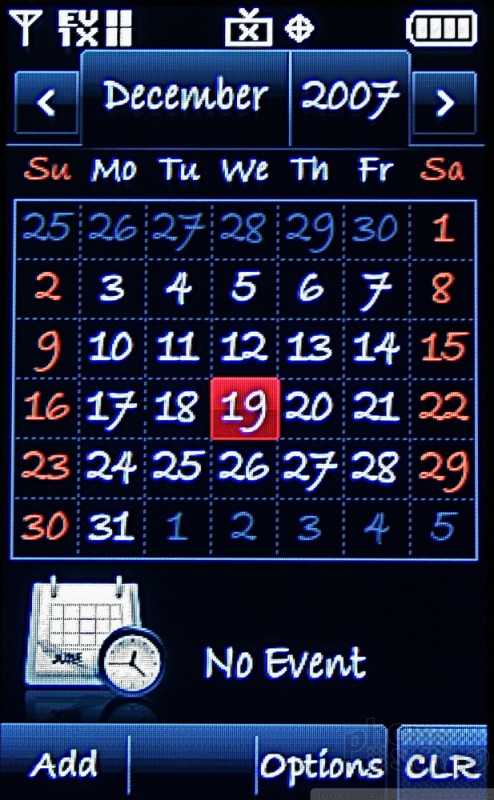
Video
Here is a video review of the Voyager. You can watch it here:
Or go to YouTube for more viewing and sharing options.
Wrap Up
The Voyager swings wide and nearly succeeds at hitting a complete jack-of-all-trades home run. A few things hold it back, though. Its lack of full email integration hinders its messaging capabilities and using both the touch screen and standard D-pad for navigation can sometimes be jarring. Despite these shortcomings, the Voyager has a fun-to-use camera, enhanced web browsing and should serve well as the power user's phone of choice.
Comments
Browser/Speed?
One thing of note, the EV-DO radio did not necessarily make for super snappy browsing. In side-by-side tests, the iPhone, running on AT&T's EDGE network, often loaded pages faster.
Has anyone used both devices and noticed such a difference?
But the reviewer is not lying, most likely when the test was done the iphone was connected via WiFi, which could be faster than EVDO.
Tingfang
HTML
questions
(continues)
Email Integration
(continues)
A Better Look...
PS I know they have the venus but it doesnt have a full keyboard so that kind of kills it for me.
Wonder if they reviewed it with new firmware?


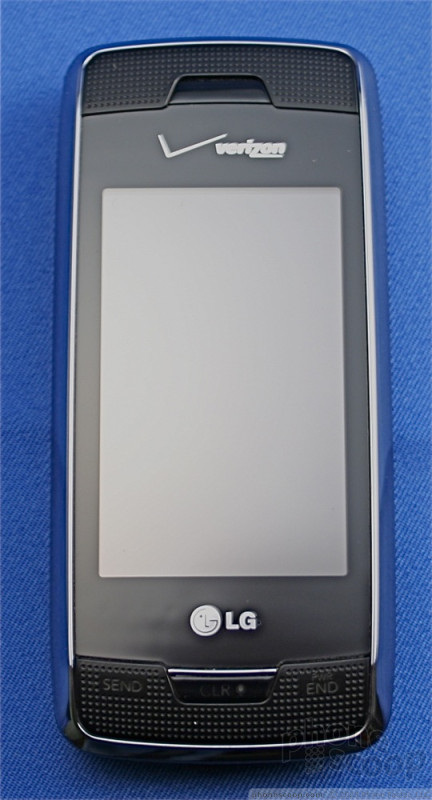









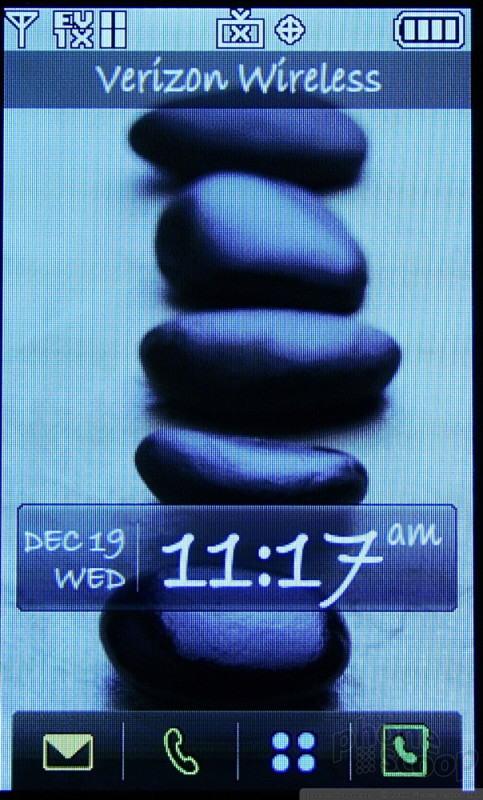







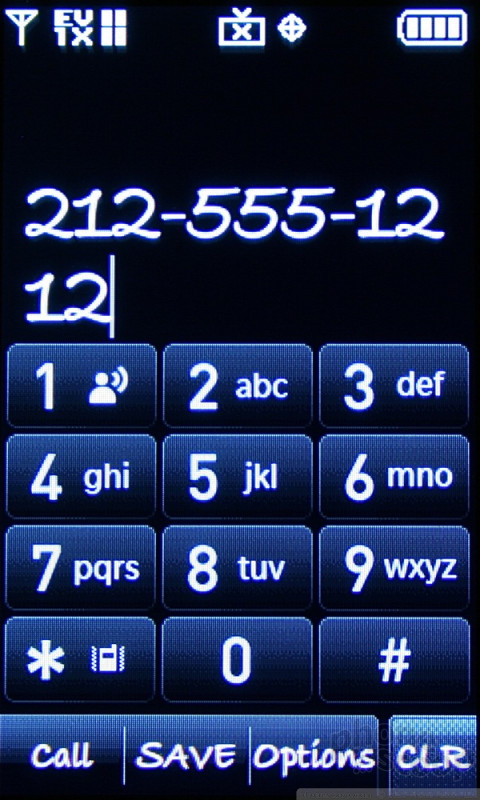









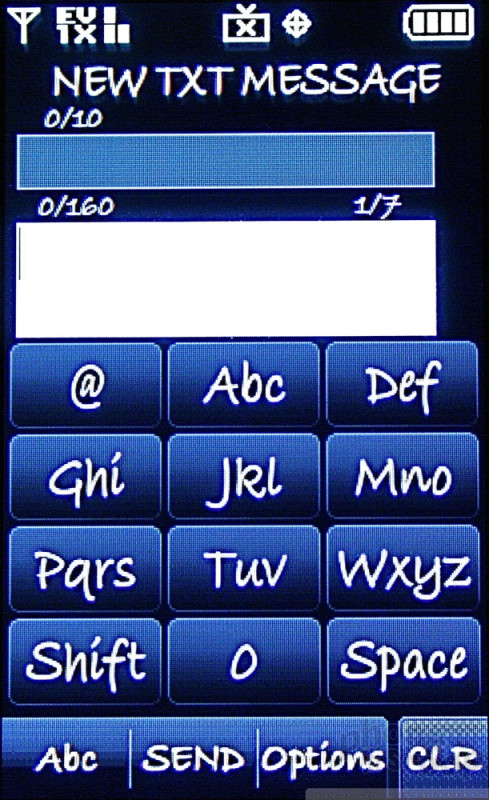






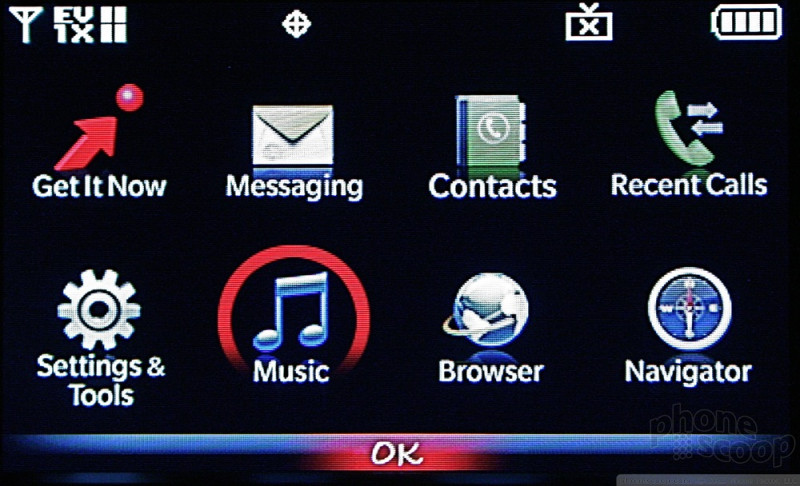















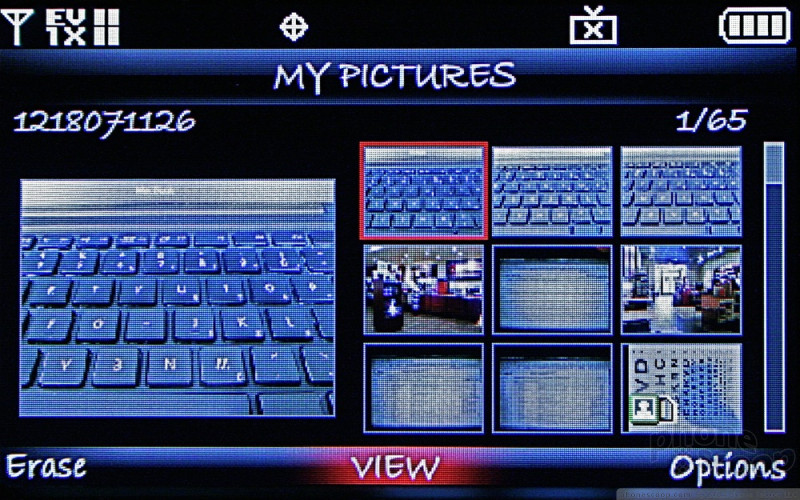





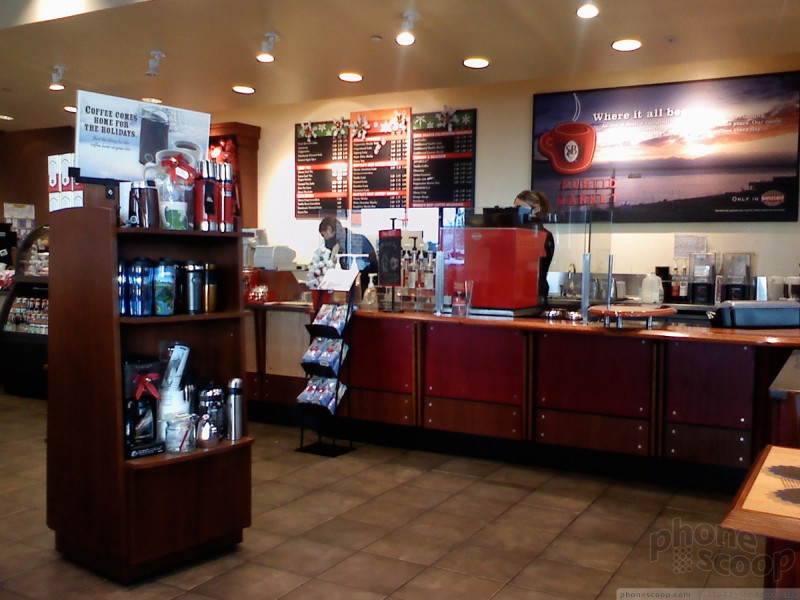




















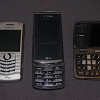 Verizon Holiday Phones
Verizon Holiday Phones
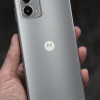 Hands On with the 2023 moto g 5G & moto g stylus
Hands On with the 2023 moto g 5G & moto g stylus
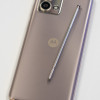 Hands On with the moto g stylus 5G (2023)
Hands On with the moto g stylus 5G (2023)
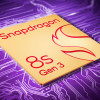 Qualcomm Expands Snapdragon 8 Series to Cover More Price Points
Qualcomm Expands Snapdragon 8 Series to Cover More Price Points
 How To Take a Screenshot on Android
How To Take a Screenshot on Android
 LG Voyager VX-10000
LG Voyager VX-10000




